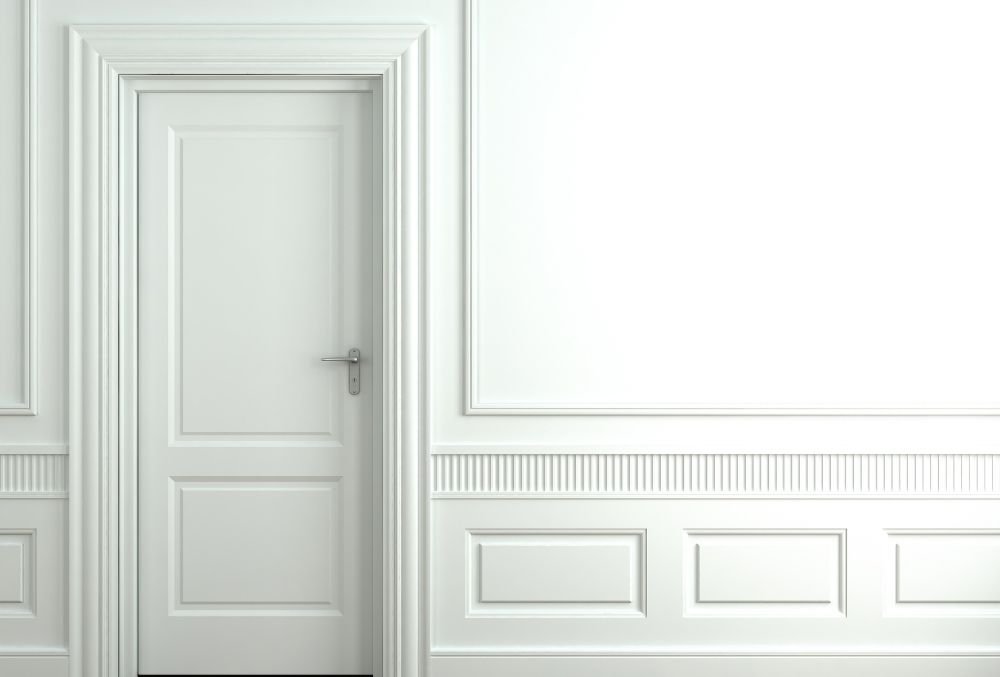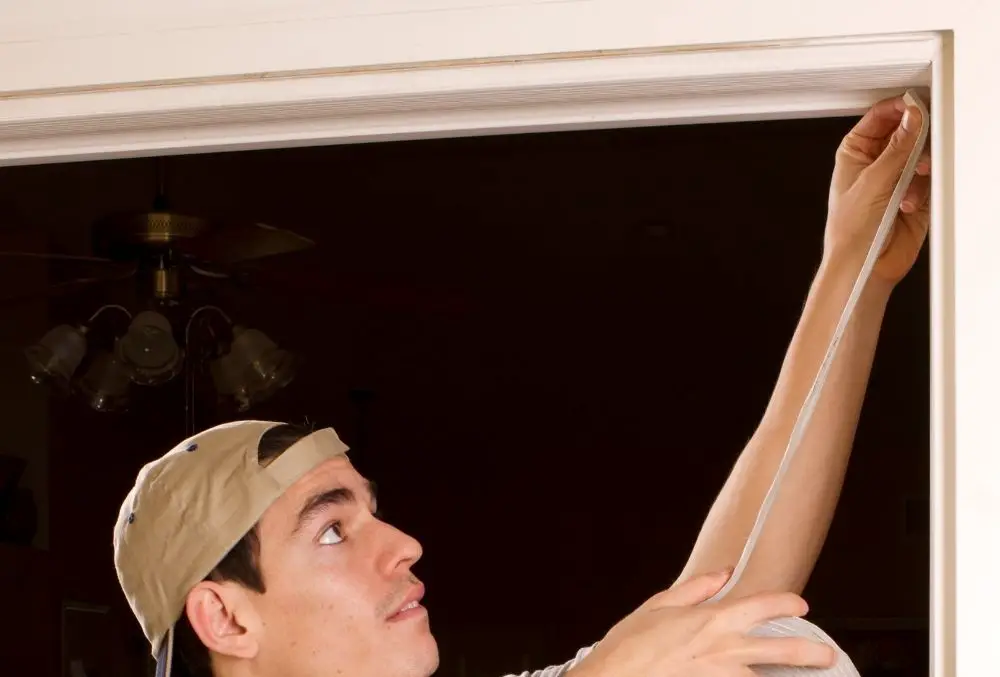Doors are one of the most vulnerable areas when it comes to sound insulation, and their construction naturally allows a lot of sound through which can lead to a lot of disturbance, particularly in smaller homes and apartments.
This is compounded by the fact that most interior doors are hollow, which means that they are even worse at preventing sound from coming through them, leading to even more disturbance in your home.
This can be really frustrating, and many people don’t understand how vulnerable hollow doors are to sound and how much of a disturbance they can cause.

It’s also difficult for most people to understand how to solve this problem, and so many people simply live with the disturbance and try to ignore it as best they can, being unaware of how to solve the problem.
However, there are several solutions you can turn to, regardless of your budget, design, or other factors that may dictate what sort of soundproofing you use.
A lot of people think of soundproofing as something that only works on walls and is expensive, however, doors have some great options available, meaning you can take control of your home and make it as soundproof as possible, whether you want more privacy or simply want a better night’s sleep.
In this guide we’re going to look at six of the best and most efficient ways to soundproof hollow doors, looking at more permanent solutions to very simple and easy solutions anyone can implement.
But let’s take a look at the systems themselves and how they work.
Table of Contents
Use A Soundproof Blanket
First and foremost, you should consider mounting or hanging a soundproof blanket on or over your door.
These are a great method of soundproofing as they offer excellent insulation and can stop a lot of sound from getting in, without being too difficult to implement, and are quite versatile in where they can be used.
The only drawback with soundproof blankets is that they can be expensive as they are designed specifically for soundproofing and use a lot of material and expertise to produce.
If you want to benefit from soundproof curtains or blankets but don’t want to break the budget on expensive soundproof options, consider instead mounting heavy or thicker blankets/curtains in lieu of soundproof options, as they may be cheaper while still offering decent soundproofing.
Although naturally, they won’t be as efficient or effective, they will offer great insulation and are very versatile, making this a great first option for most people seeking to soundproof their doors.
Seal Gaps And Cracks In The Door
The next thing to do is check that your door is in good condition. It’s very common for hollow doors to develop cracks and gaps from damage as they are very flimsy and are more for privacy than for durability making them prone to breaking very easily.
Seal any gaps you find with sealant or filler to ensure that there is some sort of physical barrier in place where gaps may occur, as this will help prevent sound from leaking through the door too easily.
Use A Door Sweep
The next thing to consider is a door sweep, which is essentially a sort of brush that can be fitted to the lower part of the door in order to prevent sound from leaking in at the gap between the door and the floor.
Interior doors don’t tend to use gaskets like exterior doors, so there is usually some sort of gap between the door and the floor, and a door sweep can help fill this gap offering significant soundproofing benefits and also working great to insulate your space, keeping out noise as well as keeping heat in.
Door sweeps are also very easy to fit, very versatile, and aren’t too expensive meaning they are a great choice you should consider using where you want an immediate improvement to your situation.
Use Weatherstripping
Weatherstripping is another great option and is relatively easy to implement while also being quite cost-effective and offering good soundproofing benefits.
Weatherstripping is usually used on windows to keep water out, but it can be used on doors too for added insulation by creating a seal around the doorframe much like a gasket although much cheaper and less reliable.

The best option is self-adhesive weatherstrips, and before use, it’s important to clean the door frame to make sure there is a good seal in place.
Install this around the doorframe where the door makes contact with the frame to create the best seal and get the best soundproofing.
Fill The Door With Insulation
This option is more complex and expensive, but it can be effective for soundproofing.
Making holes in the sides of the door and filling the door with insulation from the bottom up is the best method for this, but make sure to fill it slowly to avoid damaging the door.
The holes will need to be plugged in to prevent the insulation from leaking out and after that, you will have a door that is much more capable of keeping sound out of your space.
Replace The Door
A final option that will offer the best sound insulation is to replace your hollow door with a solid one. While this can be expensive, solid doors offer the best sound insulation and security.
It’s uncommon for interior doors to be made solid, but they are the very best option if you can afford them and can get them fitted, however, it is more hassle than some of the other options available.
Final Thoughts
Overall there are many options available to soundproof hollow doors, some more complex and difficult to implement than others.
However there are so many available that you can pick whatever works for you and your budget or situation, so there’s no need to simply put up with sound pollution anymore, whether it’s neighbors, the city streets, or your roommates!
